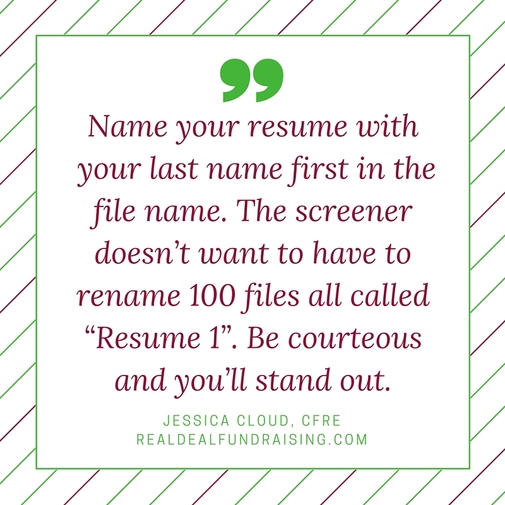|
One of the best things about being a fundraiser is that it largely an art and science that is handed down – taught from one person to another. It still isn’t quite institutionalized in higher education so it is a practical art taught by professional mentors.
I know this has been true for me and I’ve been lucky to have some wonderful mentors and colleagues that have given me so much knowledge. It’s also been a joy of mine to teach others and see those I have mentored go on to do amazing things in the world of fundraising. Today I thought I would share some of the lessons that I learned from my major mentors. Here are three of my favorite mentor takeaways On time is not on time. Early is on time. – Joe Marruchella Promptness never goes out of style. It is the one sure way to show respect for your colleagues’ time and contribution. Come early and be prepared. It’s also true for donors. Never be late to a meeting with a donor. Nothing you say after can make up for keeping them waiting. This advice is perhaps even more relevant for the technology infused world we live in. It is even more frustrating when folks are late to conference calls and Skype calls. Log in 5 minutes early to any conference call. Have your software loaded up and ready to go 5 minutes before a Skype call. Of course, sometimes you cannot help it. Things happen. Once you suspect you will be late, how you handle it says volumes about the kind of professional you are. If you are delayed while traveling, you should reach out the person you have an appointment with and inform them of the delay. Ask politely to reschedule. Don’t assume they can “squeeze you in” whenever you arrive. Your preparation on the front end will help in case of a delay because you should always have the cell phone numbers and email addresses of everyone you plan to meet with either saved in your phone or printed out on paper – or BOTH, preferably both. Correspondence (and the way it looks) is still very important. – Bob Pierce Make you correspondence top-notch. It’s still so very important. Mail and print pieces are tangible items you can hold in your hand or store in a memory box. These items have an emotional weight that makes video and electronic communication look ephemeral. Use a serif font that looks lovely and lay out your text in a pleasing way. Set up rules about graphic and correspondence standards and stick to them. If your handwriting is lovely, write your notes when possible. If not, type it and sign it. Always sign in blue ink. It signals immediately to the recipient that you actually signed it and didn’t just print your signature. Email, social media and the like are certainly important but print is forever in a way that e-communications aren’t. If someone hates your letter and sends it along to the president of your institution, that carries more weight than a forwarded email. You must become conversant with the new media while still retaining respect for and proficiency with the old media. Be courteous with technology (filenames, etc.) – Joe Marruchella People have a ton of files on their computers. Before you send a file, take a moment to consider the recipient(s) of that file and where and how they might store it. Take the time to name image files something meaningful. Add your name to the beginning of filenames whenever necessary to help the recipient organize. Add dates to the end of the files and add notations about versions when appropriate. I would recommend developing naming conventions for files that are routinely shared within your office. You don’t want to be thinking “Is that report called the monthly giving report or the donor report by month?” when you are rushing to a meeting. I might name a file that I have to send to my boss (who might have several direct reports) as follows: Cloud, Jessica June Monthly Numbers 07.08.2016 FYI: Naming your file with your name first (last name, first name) is extremely important when sending out resumes. The person screening doesn’t want to have to rename 100 files all called “Resume 1”. Be courteous and you’ll stand out from the moment that screener downloads your file. I might name a file that I am sending to a donor as follows: Last Donor Name, First Donor Name – SKSM Gift Acceptance Form 07.08.2016 version 2 Finally, make sure that any files you attach to emails are “reset” meaning that they are scrolled back to the beginning of a PDF or Word document and that you put the cursor in an Excel spreadsheet back to the A1 cell of the first worksheet within the spreadsheet. Again, this helps your recipient find their place in the file more quickly and is less disorienting for them. What lessons have you learned from your mentors? What do you try to impart to those who work and study with you? Let me know in the comments. And subscribe to Real Deal Fundraising! :) Comments are closed.
|
Jessica Cloud, CFREI've been called the Tasmanian Devil of fundraising and I'm here to talk shop with you. Archives
June 2024
Categories
All
|


 RSS Feed
RSS Feed
